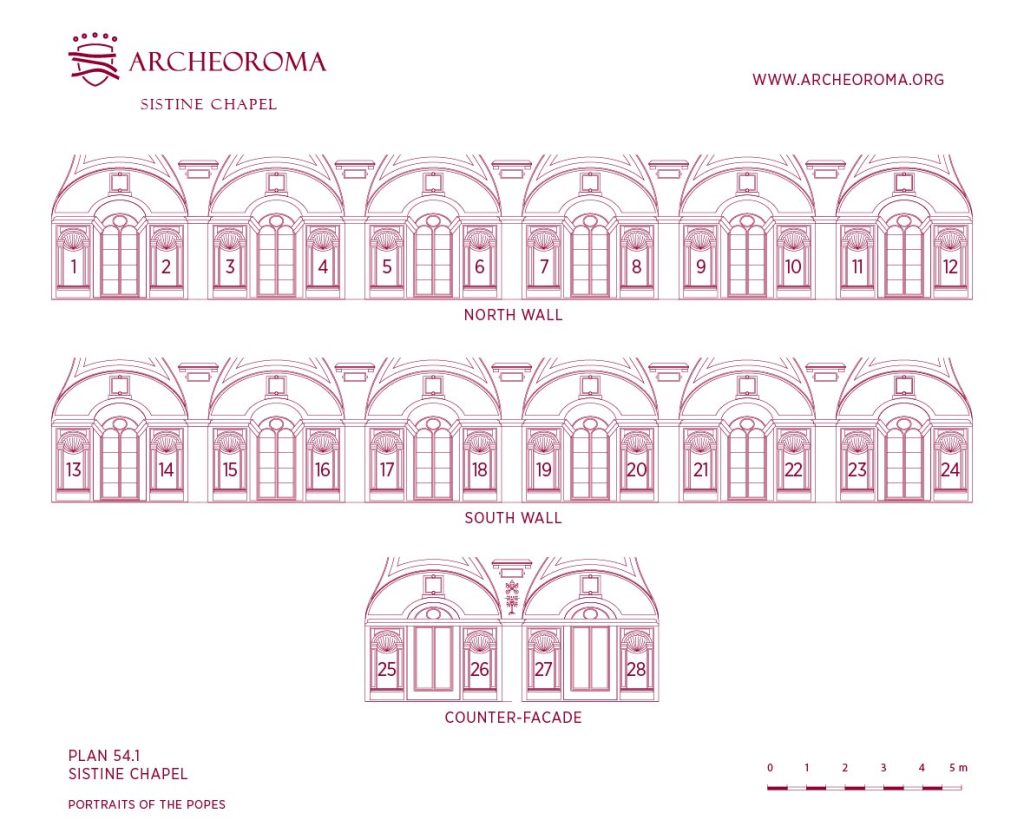
The portraits of the Popes in the Sistine Chapel are one of the most significant works of the fifteenth-century painting cycle, created between 1481 and 1482 by Renaissance masters such as Pietro Perugino, Sandro Botticelli, Cosimo Rosselli, and Domenico Ghirlandaio. Positioned in the niches of the third tier along the north and south walls and on the counter-facade, the twenty-eight portraits depict the Popes of the Catholic Church, from Saint Clement (76–88 AD) to Saint Marcellus I (308–309 AD). Each Pope is depicted in a solemn posture, with symbolic attributes identifying their role and contribution to the Church. The painted niches are not merely decorative elements but serve as a link between the chapel’s architecture and the overall iconographic program, interacting with the monophore windows below and the lunettes frescoed by Michelangelo. The sequence of portraits celebrates the continuity of the papacy and its connection to the apostolic tradition, reinforcing the idea of a universal and eternal Church guided by its successors of Peter.